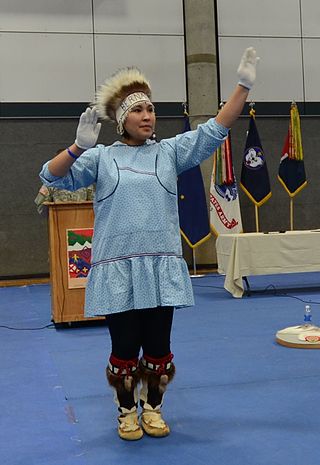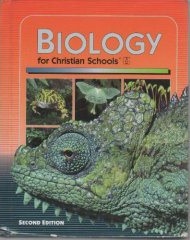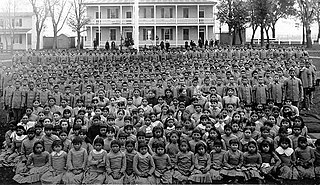
Alaska Natives are the indigenous peoples of Alaska and include Iñupiat, Yupik, Aleut, Eyak, Tlingit, Haida, Tsimshian, and a number of Northern Athabaskan cultures. They are often defined by their language groups. Many Alaska Natives are enrolled in federally recognized Alaska Native tribal entities, who in turn belong to 13 Alaska Native Regional Corporations, who administer land and financial claims.
Briggs v. Elliott, 342 U.S. 350 (1952), on appeal from the U.S. District Court for the Eastern District of South Carolina, challenged school segregation in Summerton, South Carolina. It was the first of the five cases combined into Brown v. Board of Education (1954), the famous case in which the U.S. Supreme Court declared racial segregation in public schools to be unconstitutional by violating the Fourteenth Amendment's Equal Protection Clause. Following the Brown decision, the district court issued a decree that struck down the school segregation law in South Carolina as unconstitutional and required the state's schools to integrate. Harry and Eliza Briggs, Reverend Joseph A. DeLaine, and Levi Pearson were awarded Congressional Gold Medals posthumously in 2003.

Iñupiaq or Inupiaq, also known as Iñupiat, Inupiat, Iñupiatun or Alaskan Inuit, is an Inuit language, or perhaps group of languages, spoken by the Iñupiat people in northern and northwestern Alaska, as well as a small adjacent part of the Northwest Territories of Canada. The Iñupiat language is a member of the Inuit-Yupik-Unangan language family, and is closely related to, but not mutually intelligible with, other Inuit languages of Canada and Greenland. There are roughly 2,000 speakers. Iñupiaq is considered to be a threatened language, with most speakers at or above the age of 40. Iñupiaq is an official language of the State of Alaska, along with several other indigenous languages.

Iḷisaġvik College is a public tribal land-grant community college in Utqiaġvik, Alaska. Operated by the North Slope Borough, a home rule government of the Iñupiat, it is the only tribally controlled college in Alaska, and it is the northernmost accredited community college in the United States. The college is located within the boundaries of the North Slope. It is an 89,000-square-mile (230,000 km2) region of Arctic tundra. It is connected to the 414-mile (666 km) Dalton Highway only during the winter, by an ice road for local residents. The community can also be reached by plane.

Mt. Edgecumbe High School is a public boarding high school in Sitka, Alaska in the United States. Located on Japonski Island, across Sitka Harbor from the northwestern corner of downtown Sitka, the school is situated on a portion of Sitka's former World War II-era military installations. Established in 1947 after the military abandoned the area, the school was originally operated by the federal Bureau of Indian Affairs (BIA) as part of a network of boarding high schools, which included schools in Eklutna and Wrangell. After several decades of operation by the BIA, the school was briefly closed in the 1980s before being reopened by the Alaska Department of Education, which operates it today.

The Association of Christian Schools International (ACSI), founded in 1978, is an association of evangelical Christian schools. Its headquarters are in Colorado Springs, Colorado.

Mendez, et al v. Westminister [sic] School District of Orange County, et al, 64 F.Supp. 544, aff'd, 161 F.2d 774, was a 1947 federal court case that challenged Mexican remedial schools in four districts in Orange County, California. In its ruling, the United States Court of Appeals for the Ninth Circuit, in an en banc decision, held that the forced segregation of Mexican American students into separate "Mexican schools" was unconstitutional because as US District Court Judge Paul J. McCormick stated, "The evidence clearly shows that Spanish-speaking children are retarded in learning English by lack of exposure to its use because of segregation, and that commingling of the entire student body instills and develops a common cultural attitude among the school children which is imperative for the perpetuation of American institutions and ideals." The Judge further ruled that, "The equal protection of the laws pertaining to the public school system in California is not provided by furnishing in separate schools the same technical facilities, textbooks and courses of instruction to children of Mexican ancestry that are available to the other public school children regardless of their ancestry. A paramount requisite in the American system of public education is social equality. It must be open to all children by unified school association regardless of lineage."

Elizabeth Peratrovich was an American civil rights activist, Grand President of the Alaska Native Sisterhood, and member of the Tlingit nation who worked for equality on behalf of Alaska Natives. In the 1940s, her advocacy was credited as being instrumental in the passing of Alaska's Anti-Discrimination Act of 1945, the first state or territorial anti-discrimination law enacted in the United States.
The cultural assimilation of Native Americans refers to a series of efforts by the United States to assimilate Native Americans into mainstream European–American culture between the years of 1790 and 1920. George Washington and Henry Knox were first to propose, in the American context, the cultural assimilation of Native Americans. They formulated a policy to encourage the so-called "civilizing process". With increased waves of immigration from Europe, there was growing public support for education to encourage a standard set of cultural values and practices to be held in common by the majority of citizens. Education was viewed as the primary method in the acculturation process for minorities.
Ho v. San Francisco Unified School District was a 1994 class action lawsuit by the Asian American Legal Foundation challenging the use of racial quotas after NAACP v. SFUSD limiting the enrollment of Chinese Americans by the San Francisco Unified School District. As a result of the case, San Francisco Unified school district switched to a system using a "diversity index" that excluded race as an alternative to the quota system.
Central Alaskan Yupʼik is one of the languages of the Yupik family, in turn a member of the Eskimo–Aleut language group, spoken in western and southwestern Alaska. Both in ethnic population and in number of speakers, the Central Alaskan Yupik people form the largest group among Alaska Natives. As of 2010 Yupʼik was, after Navajo, the second most spoken aboriginal language in the United States. Yupʼik should not be confused with the related language Central Siberian Yupik spoken in Chukotka and St. Lawrence Island, nor Naukan Yupik likewise spoken in Chukotka.

Biology for Christian Schools is a 1991 school-level biology textbook written from a Young Earth Creation point of view by William S. Pinkston and published by the Bob Jones University Press. The book has been controversial because it espouses the idea of Biblical inerrancy; that whenever science and Christianity conflict, the current scientific understanding is wrong. The book promotes creationism, which is rejected by the National Academy of Sciences, the National Association of Biology Teachers and the National Science Teachers Association who state creationism and intelligent design are pseudoscience.

American Indian boarding schools, also known more recently as American Indian residential schools, were established in the United States from the mid-17th to the early 20th centuries with a primary objective of "civilizing" or assimilating Native American children and youth into European American culture. In the process, these schools denigrated Native American culture and made children give up their languages and religion. At the same time the schools provided a basic Western education. These boarding schools were first established by Christian missionaries of various denominations. The missionaries were often approved by the federal government to start both missions and schools on reservations, especially in the lightly populated areas of the West. In the late 19th and early 20th centuries especially, the government paid religious orders to provide basic education to Native American children on reservations, and later established its own schools on reservations. The Bureau of Indian Affairs (BIA) also founded additional off-reservation boarding schools based on the assimilation model. These sometimes drew children from a variety of tribes. In addition, religious orders established off-reservation schools.
Chevak Cupʼik or just Cupʼik is a subdialect of Hooper Bay–Chevak dialect of Yupʼik spoken in southwestern Alaska in the Chevak by Chevak Cupʼik Eskimos. The speakers of the Chevak subdialect used for themselves as Cupʼik, but the speakers of the Hooper Bay subdialect used for themselves as Yupʼik, as in the Yukon-Kuskokwim dialect.
There is a notable lack of dental care in rural Alaska. This is likely due to the fact that many Alaska Natives live in rural villages, most of which are only accessible by boat or bush plane. There are many programs to increase awareness of the importance of dental care among Alaska Natives while helping them to receive the professional care and guidance that they need. There are many dental issues that are disproportionately common within the rural Alaska Native population, such as tooth disease. To help with these health issues, there are dentists, as well as dental therapist aides, who travel to these villages to perform care. These programs are mostly funded by the United States federal government and the Alaska Native Corporations.
Contemporary Native American issues in the United States are issues arising in the late 20th century and early 21st century which affect Native Americans in the United States. Many issues stem from the subjugation of Native Americans in society, including societal discrimination, racism, cultural appropriation through sports mascots, and depictions in art. Native Americans have also been subject to substantial historical and intergenerational trauma that have resulted in significant public health issues like alcohol use disorder and risk of suicide.
Elaine Elizabeth Abraham was a Tlingit elder and registered nurse who contributed to improving health care delivery in rural Alaska. Later active professionally in the field of education, she assisted with the creation of the Alaska Native Language Center, and, as a statewide administrator at the University of Alaska, in 1976, led the establishment of community colleges in underserved parts of the state.

Pennsylvania Association for Retarded Citizens (PARC) v. Commonwealth of Pennsylvania, 334 F. Supp. 1257, was a case where the Commonwealth of Pennsylvania was sued by the Pennsylvania Association for Retarded Citizens (PARC), now The Arc of Pennsylvania, over a law that gave public schools the authority to deny a free education to children who had reached the age of 8, yet had not reached the mental age of 5. The law had also been used by the state in multiple occasions to deny free public education to children who had a hard time integrating into classroom environments and schools. This was the first major legal case to provide equality to students with disabilities. The case was filed and settled by the United States District Court for the Eastern District of Pennsylvania and lasted between 1971 and 1972. The case was over seen by three judges, Circuit Judge Adams, and two District Judges, Masterson and Broderick. The language used during this case is outdated to modern times; therefore, the use of the word "mentally retarded" refers to any intellectual disability.
Wrangell Institute was an American Indian boarding school in Wrangell, Alaska, United States, operated by the Bureau of Indian Affairs for natives of Alaska. It operated from 1932 until 1975.
Sadie Neakok or Tagiagiña was the first female magistrate in Alaska. She served in Alaska's Second Judicial District in Utqiaġvik, Alaska.










